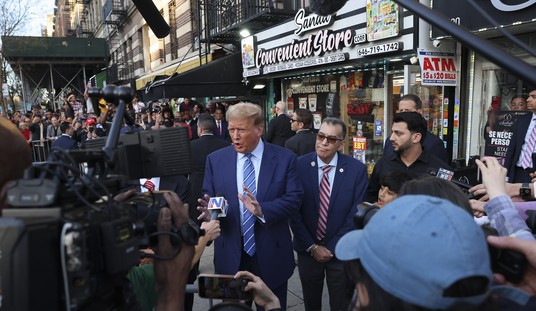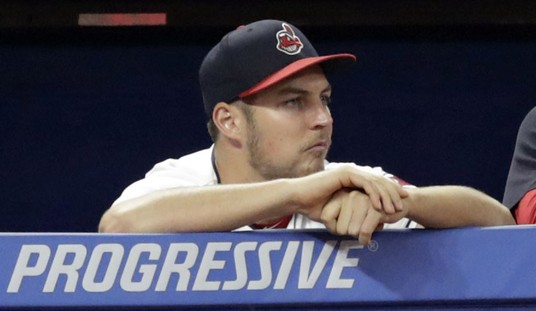Editor’s Note: This is an expansion of Kyle Smith’s list of the 10 best films of the 1950s published here in June. I’ve asked Kyle to expand his series as PJ Lifestyle begins offering more lists, articles, essays, and blog posts exploring culture, art, technology, and history by decade. Last month he expanded his ’80s list to a top 20 here and his ’60s list here. Do you disagree with Kyle’s choices? Do you have your own ideas for lists of movies or other cultural subjects? Which years and what subjects would you most like to see covered at PJ Lifestyle? Email: DaveSwindlePJM [@] gmail.com Also check out Kyle’s top 10 movie picks for the ‘30s, ’40s, ‘70s, ’90s, and the ’00s before he expands them to top 20s.
In the 1950s, the Golden Age of Hollywood faded and glorious old-school films like The Ten Commandments and Ben-Hur began to give way to grittier, wised-up films like those of Billy Wilder, creating an interesting tension between impish youth and pompous elders. Here’s one critic’s list of the twenty best films of the decade.
20. Sabrina (1954)
Billy Wilder’s romcom starred the unmatched trio of Audrey Hepburn, Humphrey Bogart and William Holden as a poor chauffeur’s daughter and the two rich brothers angling for her after ignoring her while she was growing up under their noses. Though effervescent and elegant, the film had typically Wilder-ish dark touches, such as the scene where the title character nearly succeeds in committing suicide.
https://www.youtube.com/watch?v=LlzfqVtmxVA
19. Ben-Hur (1959)
A Biblical epic with an interestingly oblique angle — Jesus Christ is a side character — this film had all of the Hollywood pageantry expected of the day’s blockbusters, but also had riveting action scenes and an unusually gritty intensity, particularly in the slow-burning galley-slave sequence that oozes with sweat and toil.
18. The Bad and the Beautiful (1952)
A wry, self-referential and ultimately fond look at a strong-willed movie producer — played by Kirk Douglas as an appealing rogue — isn’t nearly as morbid and twisted as Sunset Boulevard but it feels confessional and insidery. As the producer alienates those around him, we gradually come around to the view that big men often resort to unusual means to achieve their visions.
https://www.youtube.com/watch?v=xSImMMMf5nA
17. On the Waterfront (1954)
Director Elia Kazan was persona non-grata among Hollywood leftists when he cooperated with the House Un-American Activities Committee designed to sniff out Hollywood Communism. Party members incensed that their America-hating worldview was costing them work in America’s most glamorous industry would never forgive Kazan for making this thinly veiled defense of his actions about an informant (Marlon Brando) who takes on mob racketeering. The film helped set a new standard for tangy naturalism.
https://www.youtube.com/watch?v=sRGhOcnmChI
16. The Ten Commandments (1956)
Bathed in traditionalist Hollywood techniques, and as a consequence it came to seem stiff and dated by the 1970s. No matter: Such is Cecil B. DeMille’s charm that you forgive the corny aspects and go right along with it, getting caught up in Moses’s adventures as he is cast away from Pharoah’s court, wanders the desert, and returns to lead the Chosen People to safety across the Red Sea. The war of wills between Charlton Heston’s Moses and his virtual brother, friend and eventual sworn enemy Rameses (Yul Brynner) is one of the most fully developed and satisfying of all screen rivalries.
15. The Harder They Fall (1956)
Bogart’s last film, based on a story by Budd Schulberg (who wrote On the Waterfront), was decades ahead of its time, a brutally forthright story about boxing corruption that married noir elements with a rare honesty about sports. Bogart (who would soon die of throat cancer) plays a broke ex-sportswriter who takes a job promoting a fighter he knows will wind up on the floor while the promoters rake in all the cash.
14. Vertigo (1958)
Alfred Hitchcock’s strange psycho-sexual odyssey is intoxicating and grandiose, a bit puzzling and as emotionally intense as its vivid colors and pioneering camera work. Its fetishism, though, gives it a somewhat distancing quality (Jimmy Stewart, as a detective who orders a blonde to impersonate a missing woman right down to details of dress, is unusually hard to identify with here) and has also caused it to be overrated by sex-obsessed critics, who also revere it because it appears to tell us so much about Hitchcock.
13. North by Northwest (1959)
Hitchcock twisted together a murder thriller and a sophisticated comedy in a film that, like its charismatic but sometimes sinister star Cary Grant, is all about delightful contrasts — being trapped in an open space in the crop-duster scene, the chaos amid the tightly controlled etiquette of an art auction, feeling completely alone in Grand Central Terminal. The plot may not exactly add up, but the journey is delightful.
12. Stalag 17 (1953)
William Holden and Billy Wilder created one of the screen’s most amusing antiheroes, a crafty cynic scheming to thrive inside a German WW II prison camp who anticipated the wisecracking military jokesters of M*A*S*H and Hogan’s Heroes. The precision-engineered plot about ferreting out a rat in the barracks is icing on the cake.
11. Ace in the Hole (aka The Big Carnival) (1951)
Perhaps the blackest black comedy of the many Wilder made, this film flopped upon release and spent more than 40 years waiting for the audience to catch up to it. Now Wilder’s commentary on the self-centeredness of the media — Kirk Douglas plays an amoral newspaperman who, upon discovering a man trapped in a mine, arranges to delay his rescue in order to keep the story alive — feels appropriately disgusted and withering.
10. Dial M for Murder (1954)
Alfred Hitchcock was in his prime, making Vertigo, Rear Window and North by Northwest this decade. None of them made this list. His lean, witty, sophisticated, expertly plotted murder-mystery starring Ray Milland and Grace Kelly is his tightest, most focused film of the decade, suffering from none of the languors and excesses of the other three (particularly Vertigo). There isn’t a wasted moment in it, and the finish is a knockout.
9. Paths of Glory (1957)
It’s tough to leave out Stanley Kubrick’s steely crime thriller The Killing, but Paths was an even more groundbreaking film, a beautiful, somber WWI antiwar tale about a French officer (Kirk Douglas) who is forced to shoot three men chosen at random for cowardice because a doomed trench-warfare sally dreamed up by incompetent generals failed. It’s a small, personal, gritty story that unfolds into a powerful fable of an especially infuriating war.
8. Some Like It Hot (1959)
Billy Wilder,whose other great films this decade include Sabrina, Ace in the Hole and Stalag 17, went for pure anarchic comedy in this sunny confection that took one of the world’s oldest gags (cross-dressing men, played by Jack Lemmon and Tony Curtis) and updated it with Marilyn Monroe’s loopy sweetness and a crackerjack plot that has enough twists, impersonations and pull-the-rug out moments to fill half a dozen of today’s movies.
https://www.youtube.com/watch?v=skZDG3Ffw8A
7. All About Eve (1950)
Joseph L. Mankiewicz set the standard for witty, metropolitan screenwriting with his inside look at Broadway backstabbers as seen by a mordant theater columnist (George Sanders, in a defining role) who observes an upstart actress (Anne Baxter) bent on displacing an aging star (Bette Davis). In her simpering unctuousness, Eve is a character to rival Charles Dickens’ Uriah Heep.
https://www.youtube.com/watch?v=SkNu4-sSglY
6. High Noon (1952)
The Fred Zinnemann-directed Gary Cooper western was an artsy experiment in tense, stripped-down storytelling that unfolds in real time, as a brave sheriff (Gary Cooper) tries to round up some deputies to face down some major villains due to arrive on the noon train. Written by a disillusioned ex-Communist (Carl Foreman) who would go on to be a hero to the Left for being blacklisted after refusing to name names of fellow travelers, the film’s clear message was a warning about the dangers of pacifism and failing to stand up against crime and terror. Cooper’s Marshal Kane is simply and calmly the world’s policeman, because without him the forces of darkness would rule.
5. A Face in the Crowd (1957)
Fans of Andy Griffith’s gentle country-boy act on the long-running sitcom named for him will be shocked by his hard-edged nastiness in director Budd Schulberg’s acidic reflection on the Will Rogers myth. Griffith plays an alcoholic Arkansas singer who becomes first an entertainment personality and then morphs into the equivalent of Rogers, a sinister charlatan with fascist leanings who leads gullible Americans into becoming mindless political followers. The film is more interesting, and a lot more entertaining, than Schulberg’s 1954 attack on liberalism, On the Waterfront.
4. Sweet Smell of Success (1957)
Possibly the most quotable film ever written, this evocative, jazz-infused noir about New York newspapering and nightlife in the 1950s starred an icy Burt Lancaster as the Walter Winchell-like columnist J.J. Hunsecker, with Tony Curtis an ideal foil as the sniveling P.R. man Sidney Falco. The film is so vicious and brutal about both New York and newspapers that it’s especially beloved by New Yorkers and newspapermen: “I love this dirty town,” Hunsecker famously exclaims after watching two guys fistfight in the street.
https://www.youtube.com/watch?v=Y3P0Zpe-2og
3. Sunset Boulevard (1950)
Like virtually all Billy Wilder films, this one was years ahead of its time, a funny and weird take on Hollywood in which a struggling screenwriter (William Holden) agrees to become a sort of in-house boytoy to a self-deluding silent movie queen (Gloria Swanson). What could go wrong? Wilder, who was born in what is now Poland, had been working in Hollywood for many years and yet he always maintained the outsider’s sense of wonder at how bizarre it all was. It was his cunning sense of humor, though, that made what could have been a soapy drama into a black-comic noir by which all others would be judged.
2. The Bridge on the River Kwai (1957)
Another Carl Foreman-written film, this dramatic adventure takes place in a Japanese prison camp where U.S. and British P.O.W.s in the command of a by-the-book colonel (Alec Guinness) agree to give their all to complete a bridge because of honor, military discipline and morale. The film is simultaneously a lively adventure, a stirring paen to military resolve and comradeship, and a suspenseful thought piece about competing values under the most dire circumstances. Director David Lean would go on to make two of my five favorite films of the 1960s, Lawrence of Arabia and Doctor Zhivago.
1. Singin’ in the Rain (1952)
A hilarious, affectionate look back at Hollywood as it entered the talkie era, this was a package of sheer cinematic joy starring three absolute charmers in Gene Kelly, Debbie Reynolds and Donald O’Connor. It features the best musical number ever put on film — no not the title song, the “Make ‘Em Laugh” number in the middle — and a combination of wry wisdom and infectious good cheer that few films can even approach.








Join the conversation as a VIP Member